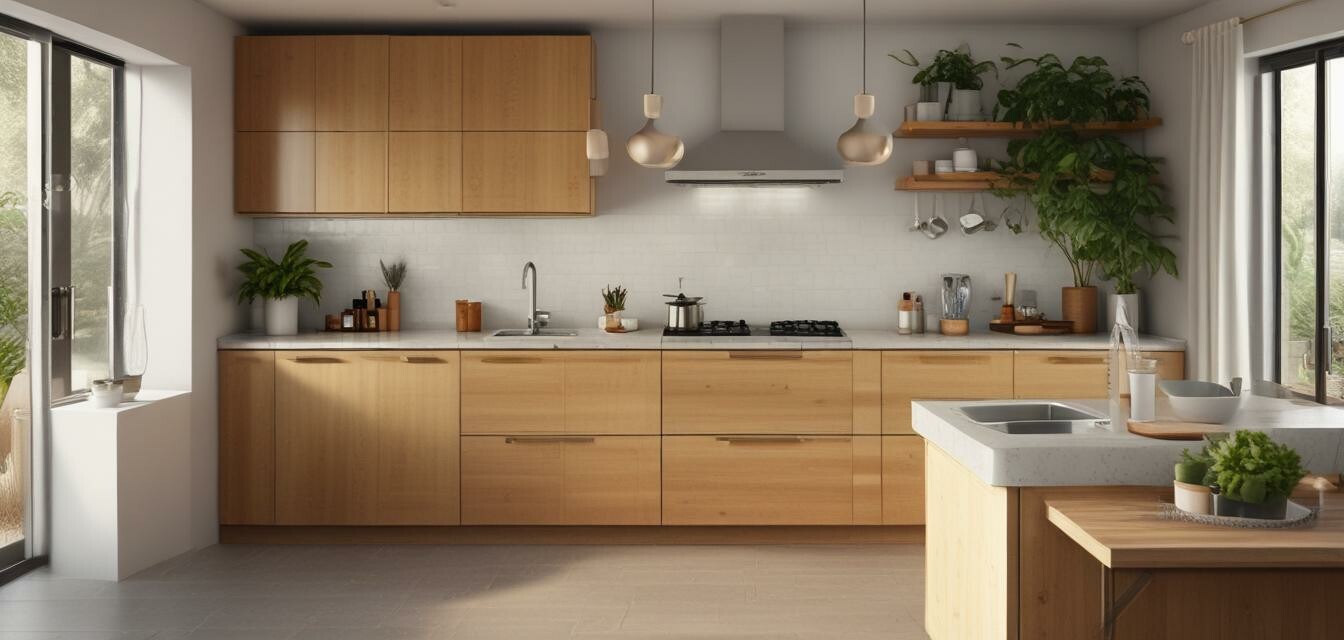
The effects of climate change on kitchen design
- Climate change is driving a shift towards sustainable kitchen design.
- Materials like bamboo and recycled products are becoming popular.
- Energy-efficient appliances are essential in modern kitchens.
- Water conservation techniques are being integrated into kitchen designs.
- Natural lighting and indoor plants are trending in kitchen aesthetics.
As climate change continues to impact our environment, it's becoming increasingly important for every aspect of our lives to adapt, including kitchen design. The kitchen, one of the most crucial spaces in any home, is evolving to meet the needs of an environmentally conscious society. Let's investigate how climate change is influencing modern kitchen design and materials, leading to more sustainable and resilient cooking spaces.
1. Sustainable materials in kitchen design
The materials used in kitchen design are changing due to climate awareness. Here's a look at some popular eco-friendly materials:
| Material | Description | Benefits |
|---|---|---|
| Bamboo | A fast-growing and renewable resource. | Durable, lightweight, and naturally antimicrobial. |
| Recycled glass | Utilizing post-consumer glass waste. | Unique aesthetic, non-porous, and easy to clean. |
| Reclaimed wood | Wood salvaged from old buildings or furniture. | Reduces waste and provides character. |
| Low-VOC finishes | Water-based finishes with fewer volatile organic compounds. | Improves air quality and reduces harmful emissions. |
2. Energy-efficient appliances
Energy-efficient appliances are crucial for reducing energy consumption in the kitchen. Here are some trends:
- Smart appliances that adjust energy usage.
- Induction cooktops that heat cookware directly.
- Energy Star-certified products that meet strict efficiency guidelines.
- Appliances designed for multifunctionality to minimize redundancy.
Choosing energy-efficient appliances:
When selecting appliances for your kitchen, consider energy-efficient options. These appliances not only reduce energy bills but also lessen the environmental impact.
3. Water conservation techniques
With water scarcity becoming a pressing issue, kitchens are implementing various water-saving technologies:
- Low-flow faucets and showerheads reduce water usage.
- Dishwashers that use less water than traditional washing methods.
- Rainwater harvesting systems for non-potable uses.
- Greywater recycling to irrigate kitchen gardens.
4. Embracing natural elements
Incorporating natural elements into kitchen design is not just about aesthetics; it's about enhancing well-being and sustainability:
- Large windows that allow natural light.
- Indoor plants that improve air quality and aesthetics.
- Natural wood finishes that connect the kitchen to the outdoors.
Using indoor plants:
Consider growing herbs in your kitchen as a way to incorporate plants. This can be both functional and decorative, enhancing the ambiance of your culinary space while supporting your cooking.
5. Innovative kitchen designs
Design concepts are evolving to meet climate challenges:
Pros
- Increased energy and water efficiency.
- Healthier indoor environment.
- Reduced carbon footprint.
- Cost savings from energy-efficient appliances.
Cons
- Higher upfront costs for eco-friendly materials.
- Limited availability in some regions.
- Need for ongoing maintenance of certain materials.
6. The future of kitchen design
As climate awareness grows, we can expect even more innovations in the kitchen space. Here are some potential trends:
- More sustainable manufacturing processes.
- Integration of smart technology for efficiency.
- More designs focused on circular economy principles.
- Emergence of modular kitchens that adapt to various needs.
Conclusion
Climate change is reshaping the kitchen design landscape, leading to creative solutions that promote sustainability and environmental friendliness. By choosing eco-friendly materials, adopting energy-efficient appliances, and incorporating water conservation techniques, we can create kitchens that reflect our commitment to the planet. As these trends continue to evolve, kitchens will not only be places for cooking but also spaces for maintaining a sustainable lifestyle.
Tips for adopting eco-friendly kitchen design
- Research local resources for sustainable materials.
- Consider the lifecycle of products before purchasing.
- Plan layouts that maximize natural light and air circulation.
- Join communities focused on sustainable living for more ideas.



